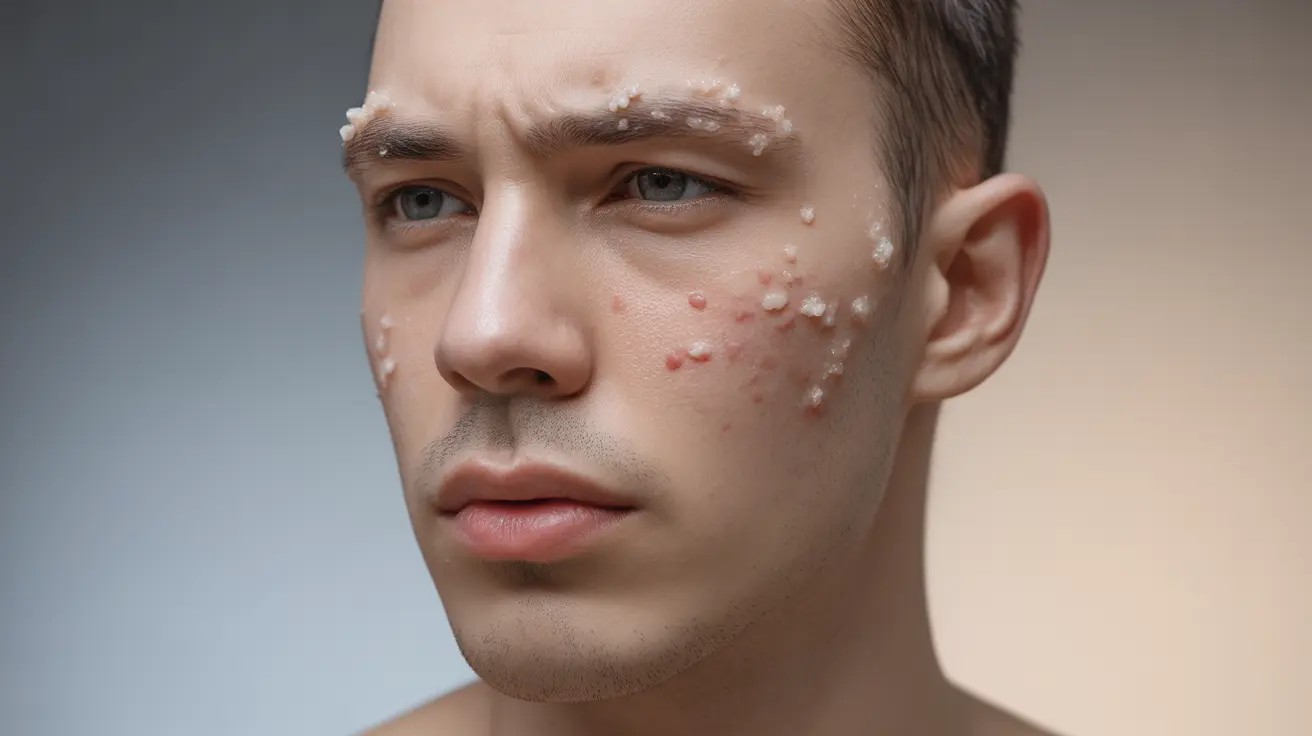Facial dandruff, a common skin condition that affects many people, can be both uncomfortable and embarrassing. This condition, which is closely related to seborrheic dermatitis, causes flaking, redness, and irritation on various areas of the face. Understanding its causes and proper management strategies is crucial for those seeking relief from this persistent condition.
While similar to scalp dandruff, facial dandruff requires specific attention and care due to the sensitive nature of facial skin. This comprehensive guide will explore everything you need to know about managing and treating this condition effectively.
Understanding Facial Dandruff and Its Causes
Facial dandruff typically occurs when the skin's natural renewal process becomes disrupted, leading to visible flaking and irritation. The condition is often triggered by an overgrowth of a yeast-like fungus called Malassezia, which naturally exists on our skin but can sometimes multiply excessively.
Several factors can contribute to facial dandruff development:
- Oily skin production
- Hormonal changes
- Stress and fatigue
- Environmental factors
- Immune system responses
- Certain skin care products
Common Areas Affected by Facial Dandruff
Facial dandruff typically appears in specific areas of the face where oil glands are more active:
- Eyebrows and between the brows
- Sides of the nose
- Nasolabial folds
- Chin and beard area
- Hairline
Signs and Symptoms to Watch For
Recognizing the symptoms of facial dandruff is crucial for proper treatment. Common signs include:
- White or yellowish flakes on the skin
- Redness and inflammation
- Itching or burning sensation
- Dry or oily patches
- Mild to moderate skin irritation
Effective Home Treatment Strategies
Many people can successfully manage facial dandruff through proper skincare routines and home remedies:
Gentle Cleansing Routine
Use mild, non-irritating cleansers specifically formulated for sensitive or problematic skin. Wash your face twice daily, but avoid harsh scrubbing, which can worsen symptoms.
Anti-Dandruff Products
Look for products containing active ingredients such as:
- Zinc pyrithione
- Selenium sulfide
- Ketoconazole
- Tea tree oil
- Salicylic acid
Medical Treatments and Professional Care
When home remedies aren't sufficient, medical treatments may include:
- Prescription antifungal creams
- Topical corticosteroids
- Prescription-strength medicated cleansers
- Immunomodulators for severe cases
Prevention and Lifestyle Management
Preventing facial dandruff flare-ups involves several key strategies:
- Maintaining a consistent skincare routine
- Managing stress levels
- Avoiding harsh skincare products
- Protecting skin from extreme weather conditions
- Staying hydrated
- Following a balanced diet
Frequently Asked Questions
What causes facial dandruff and how is it related to seborrheic dermatitis? Facial dandruff is actually a form of seborrheic dermatitis, caused primarily by an overproduction of skin oils and an overgrowth of Malassezia yeast. This condition can be triggered by hormonal changes, stress, and environmental factors.
What are the common symptoms of facial dandruff and where on the face does it usually appear? Common symptoms include white or yellowish flakes, redness, and itching. It typically appears in areas with more oil glands, such as the eyebrows, sides of the nose, and chin area.
How can facial dandruff be treated at home and when should I see a doctor? Home treatments include using anti-dandruff cleansers, maintaining good skincare habits, and using products with specific active ingredients. See a doctor if symptoms persist after several weeks of home treatment or if the condition becomes severe or painful.
What medical treatments are available for persistent or severe facial dandruff? Medical treatments include prescription antifungal creams, topical corticosteroids, and specialized medicated cleansers. Your healthcare provider can determine the most appropriate treatment based on your specific condition.
How can I prevent facial dandruff and reduce flare-ups through daily skincare and lifestyle changes? Prevention involves maintaining a consistent skincare routine, using appropriate products, managing stress levels, protecting your skin from harsh environmental conditions, and maintaining good overall health through diet and hydration.




